
Saint Paul: The Historic Heart of Minnesota
Discover Saint Paul, Minnesota's capital city, where history, culture, and modern charm converge along the banks of the Mississippi River.
Saint Paul, the capital city of Minnesota, is a treasure trove of history and culture. Nestled along the banks of the mighty Mississippi River, this city offers a delightful blend of old-world charm and modern vibrancy. From its grand architecture to its bustling neighborhoods, Saint Paul invites you to explore its many layers. The city is home to a range of attractions that cater to all interests. History buffs will appreciate the grandiose State Capitol building and the historic Cathedral of Saint Paul. Art enthusiasts can savor the exhibits at the Minnesota Museum of American Art and the Science Museum of Minnesota. For families, the Como Park Zoo and Conservatory provide a fun and educational outing. Saint Paul also boasts a thriving food scene, with an array of restaurants serving everything from traditional Midwestern fare to international cuisine. The city's numerous parks and green spaces, such as Harriet Island and the Mississippi National River and Recreation Area, offer perfect spots for relaxation and outdoor activities. Whether you're strolling down Summit Avenue, shopping at local boutiques, or enjoying a live performance at the Ordway Center for the Performing Arts, Saint Paul promises an unforgettable experience.
Local tips in Saint Paul
- Visit the State Capitol building for free guided tours and a stunning view of the city from the dome.
- Check out the local events calendar for festivals, concerts, and cultural events happening during your stay.
- Use the Skyway system to navigate downtown Saint Paul during cold or rainy weather.
- Stop by the Saint Paul Farmers' Market for fresh produce and local crafts, especially on weekends.
- Take a riverboat cruise on the Mississippi River for a unique perspective of the city.
- Summit Avenue is a must-see for its historic mansions and beautiful architecture.
- Don't miss the chance to sample local craft beers at one of Saint Paul's many breweries.
Neighbourhoods in Saint Paul
Saint Paul: The Historic Heart of Minnesota
Saint Paul, the capital city of Minnesota, is a treasure trove of history and culture. Nestled along the banks of the mighty Mississippi River, this city offers a delightful blend of old-world charm and modern vibrancy. From its grand architecture to its bustling neighborhoods, Saint Paul invites you to explore its many layers. The city is home to a range of attractions that cater to all interests. History buffs will appreciate the grandiose State Capitol building and the historic Cathedral of Saint Paul. Art enthusiasts can savor the exhibits at the Minnesota Museum of American Art and the Science Museum of Minnesota. For families, the Como Park Zoo and Conservatory provide a fun and educational outing. Saint Paul also boasts a thriving food scene, with an array of restaurants serving everything from traditional Midwestern fare to international cuisine. The city's numerous parks and green spaces, such as Harriet Island and the Mississippi National River and Recreation Area, offer perfect spots for relaxation and outdoor activities. Whether you're strolling down Summit Avenue, shopping at local boutiques, or enjoying a live performance at the Ordway Center for the Performing Arts, Saint Paul promises an unforgettable experience.
When is the best time to go to Saint Paul?
Iconic landmarks you can’t miss
CHS Field
Discover the thrill of baseball at CHS Field, the premier stadium in St. Paul, Minnesota, where every game is a festive celebration.
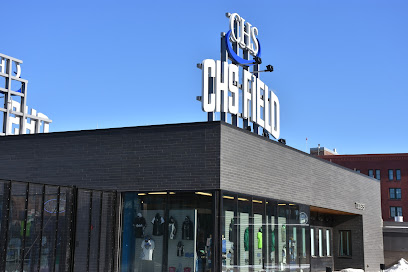
Cathedral of Saint Paul
Discover the Cathedral of Saint Paul: a stunning architectural masterpiece and serene spiritual haven in the heart of Minnesota's capital.
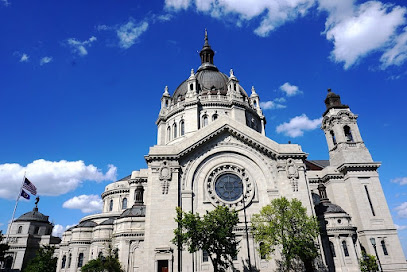
Minnesota History Center
Discover Minnesota's history at the Minnesota History Center, a dynamic museum showcasing the state's diverse heritage and captivating stories.
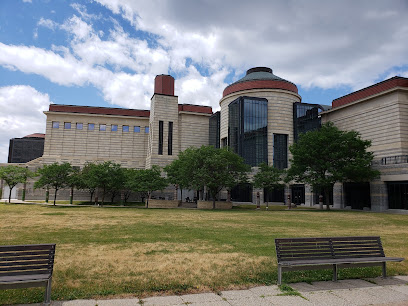
Fort Snelling State Park
Explore the natural beauty and rich history of Fort Snelling State Park, a premier outdoor destination in Minnesota.
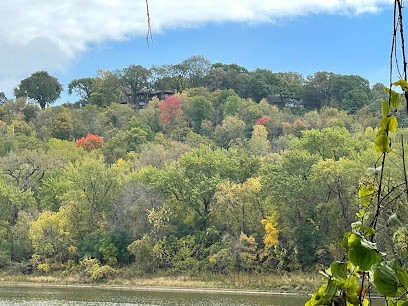
Palace Theatre
Discover the Palace Theatre, a historic live music and performing arts venue in downtown St. Paul, showcasing diverse performances in a stunning setting.
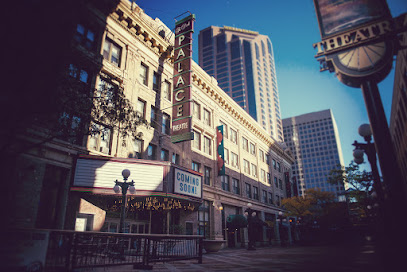
St. Paul Farmers' Market
Experience the local culture at St. Paul Farmers' Market, featuring fresh produce, artisanal goods, and a lively community atmosphere in downtown St. Paul.
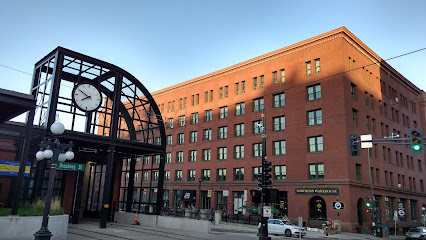
Rice Park
Discover the beauty of Rice Park in Downtown St. Paul, where lush landscapes and historic landmarks create a perfect urban retreat.
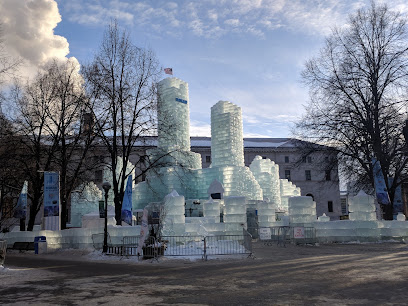
Science Museum of Minnesota
Discover the Science Museum of Minnesota—an educational haven filled with interactive exhibits, engaging activities, and stunning films for all ages.
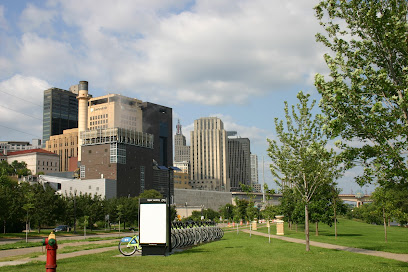
Mears Park
Experience the beauty and community spirit of Mears Park in downtown St. Paul, a perfect escape for relaxation and vibrant local events.
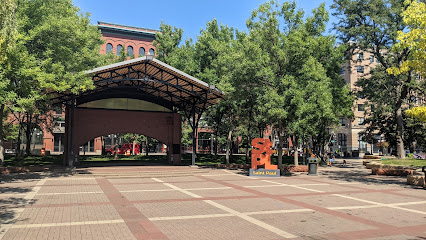
James J. Hill House
Step into history at the James J. Hill House, an architectural marvel showcasing the legacy of one of America's most influential railroad tycoons.
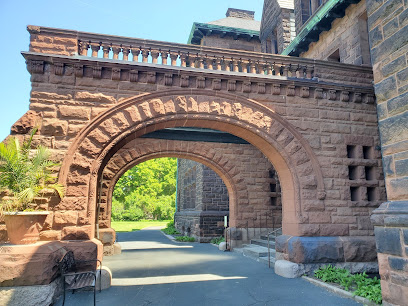
Hidden Falls Regional Park
Explore the beauty of Hidden Falls Regional Park, a serene retreat in St. Paul, Minnesota, featuring waterfalls, hiking trails, and picnic spots.
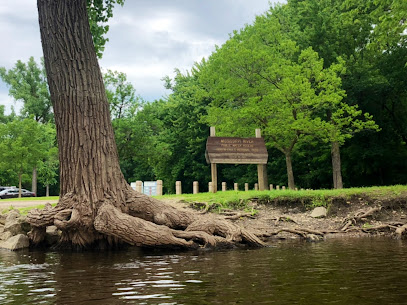
Landmark Center
Discover the rich history and cultural vibrancy of Landmark Center, a stunning architectural gem in St. Paul that hosts art, events, and community gatherings.
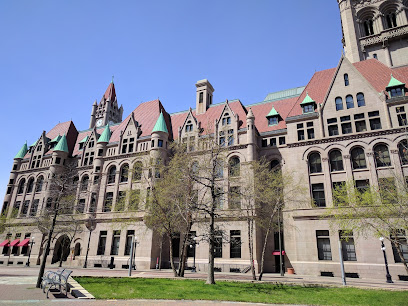
Minnesota Children's Museum
Discover the joy of learning through play at the Minnesota Children's Museum, where curiosity meets creativity for endless fun.
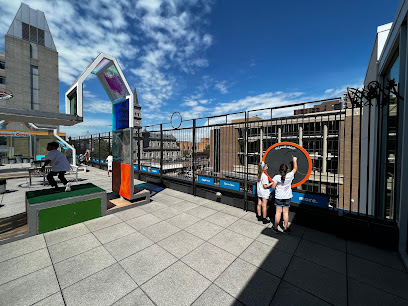
Union Depot
Discover the architectural splendor and vibrant community spirit of Union Depot, a historic landmark in St. Paul, Minnesota, offering transportation and cultural events.
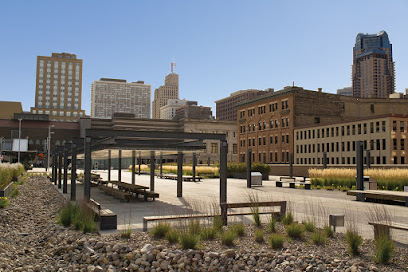
Wabasha Street Caves
Uncover the wonders of Wabasha Street Caves, a historic underground attraction in St. Paul, Minnesota, perfect for adventurous tourists and unique events.
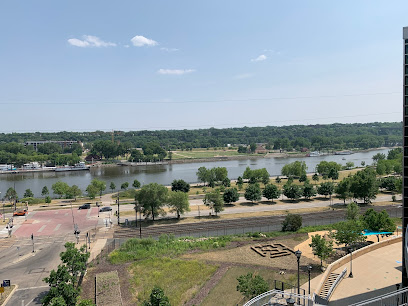
Unmissable attractions to see
U.S. Bank Stadium
Experience the thrill of live events at U.S. Bank Stadium, Minneapolis' premier venue for sports, concerts, and unforgettable entertainment.
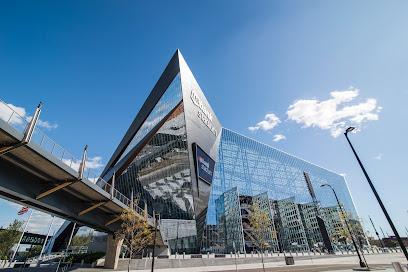
Target Field
Discover the excitement of Target Field, home of the Minnesota Twins, where baseball meets the vibrant spirit of Minneapolis.
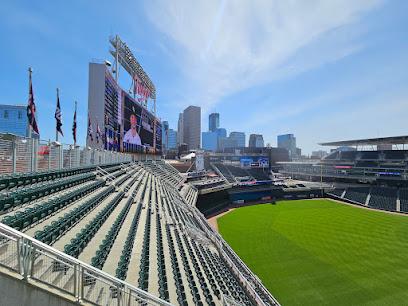
Como Park Zoo & Conservatory
Explore the diverse wildlife and stunning gardens at Como Park Zoo & Conservatory, a perfect family-friendly destination in St. Paul, Minnesota.
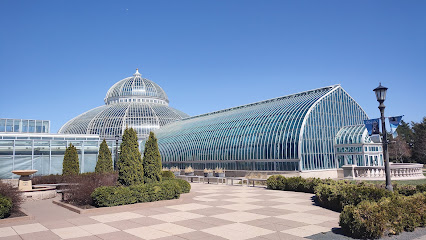
Como Regional Park
Discover the beauty of Como Regional Park in St. Paul—an ideal destination for nature lovers, families, and outdoor enthusiasts alike.
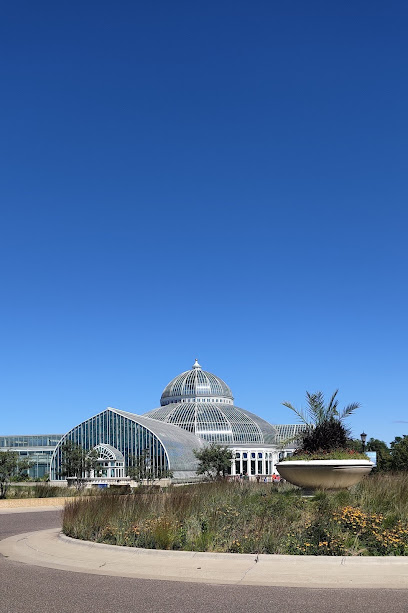
The Escape Game Minneapolis
Discover the ultimate escape room experience at The Escape Game Minneapolis, where adventure and excitement await in every challenge.
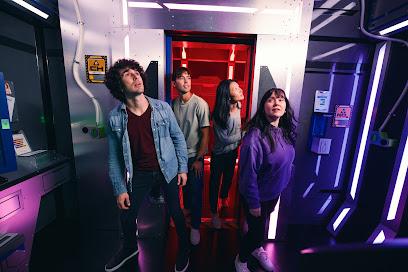
Xcel Energy Center
Discover the excitement of Xcel Energy Center, a premier venue for NHL games and concerts in the heart of St. Paul, Minnesota.
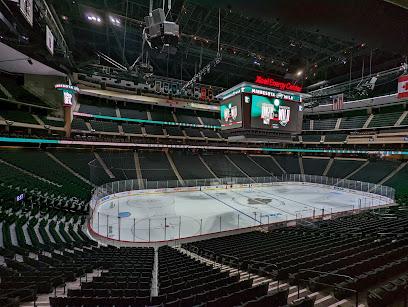
Minnehaha Regional Park
Experience the breathtaking Minnehaha Regional Park, home to stunning waterfalls, scenic trails, and vibrant wildlife in the heart of Minneapolis.
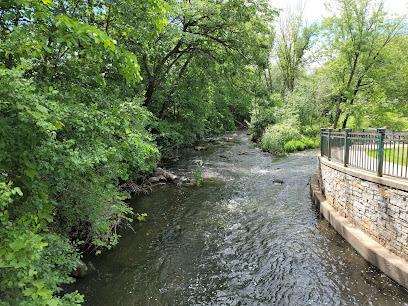
Minneapolis Institute of Art
Explore the Minneapolis Institute of Art, where centuries of creativity come alive with free admission to world-class exhibits and enriching experiences.
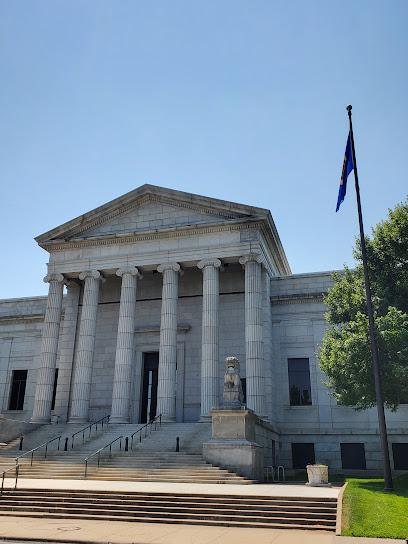
Target Center
Discover the excitement of Target Center, Minneapolis' premier live music and sports venue, hosting unforgettable events throughout the year.

Minneapolis Sculpture Garden
Explore the Minneapolis Sculpture Garden, a vibrant blend of art and nature featuring iconic sculptures, serene pathways, and a welcoming atmosphere for all.
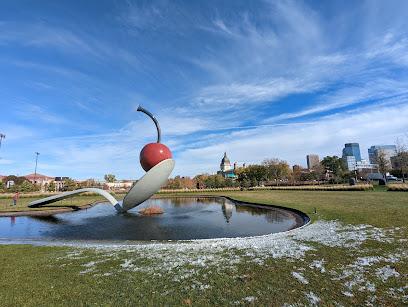
The Armory
Discover The Armory, Minneapolis' historic venue for live music, boxing, and unforgettable events, blending culture and entertainment in one iconic location.
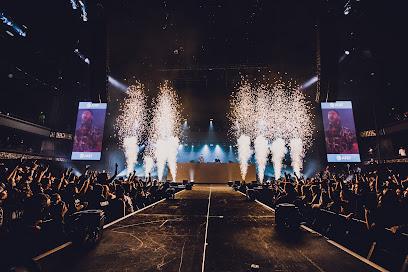
Mississippi National River & Recreation Area
Experience the natural wonders and rich history at Mississippi National River & Recreation Area, perfect for outdoor activities and relaxation.
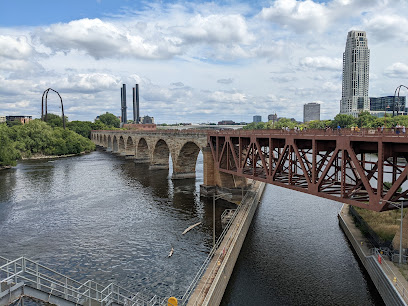
Guthrie Theater
Experience the artistry and innovation of the Guthrie Theater, a top cultural destination in Minneapolis offering premier performances and stunning views.
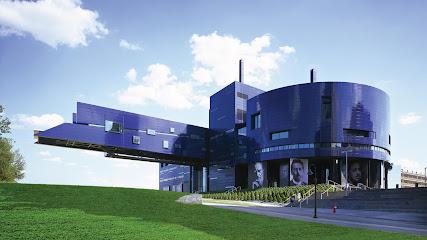
Orpheum Theatre
Discover the magic of the Orpheum Theatre in Minneapolis, a historic venue showcasing Broadway shows, concerts, and unforgettable performances.
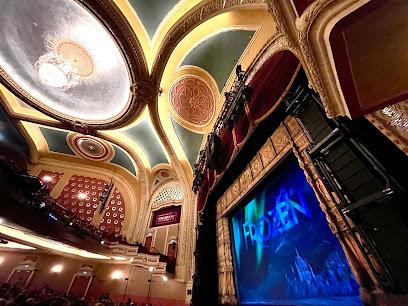
Minnehaha Falls
Discover the natural beauty of Minnehaha Falls, a stunning waterfall and park in Minneapolis, perfect for outdoor adventures and serene escapes.
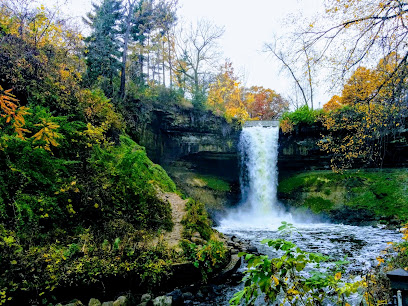
Essential places to dine
Cossetta
Experience authentic Italian cuisine at Cossetta in St. Paul – a must-visit destination for food lovers seeking delicious meals and delightful pastries.
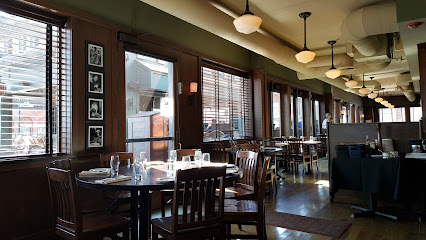
Red Cow St. Paul
Experience the vibrant flavors of American cuisine at Red Cow St. Paul - where gourmet burgers meet local charm.
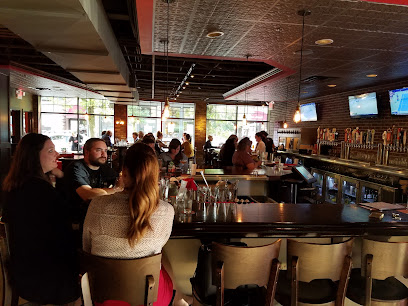
The Gnome Craft Pub
Experience St. Paul's vibrant culinary scene at The Gnome Craft Pub with its unique dishes and extensive craft beer selection.
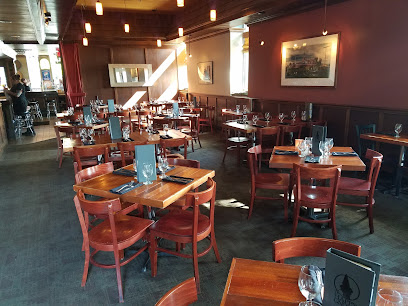
Moscow on the Hill
Discover authentic Russian cuisine in St. Paul at Moscow on the Hill—a blend of tradition and modernity awaits you.
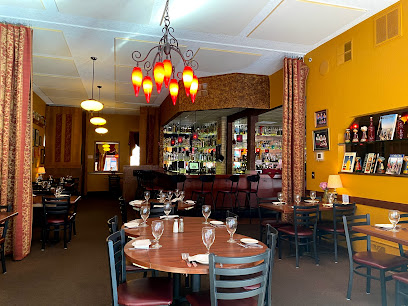
Revival St. Paul
Experience authentic Southern cuisine at Revival St. Paul, where every dish tells a story and every bite brings joy.
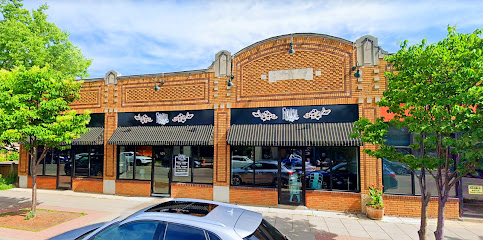
Handsome Hog
Savor the essence of Southern cuisine at Handsome Hog, St. Paul's vibrant dining destination offering unforgettable flavors and event experiences.
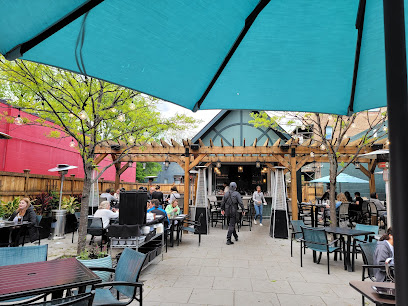
Burger Moe's
Savor delicious gourmet burgers and craft drinks at Burger Moe's in St. Paul - your ultimate burger destination!
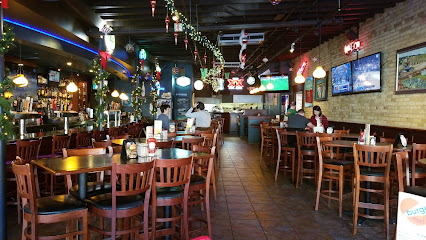
Tongue in Cheek
Discover the essence of modern American dining at Tongue in Cheek – where innovative cuisine meets warm hospitality in St. Paul.
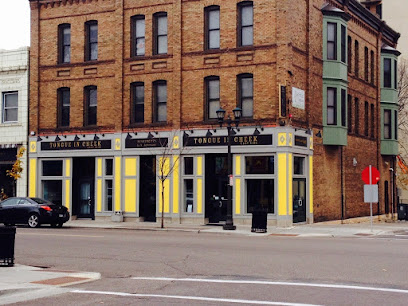
W. A. Frost and Company
Experience exquisite American cuisine at W. A. Frost and Company in St. Paul—where every dish is a celebration of flavor.
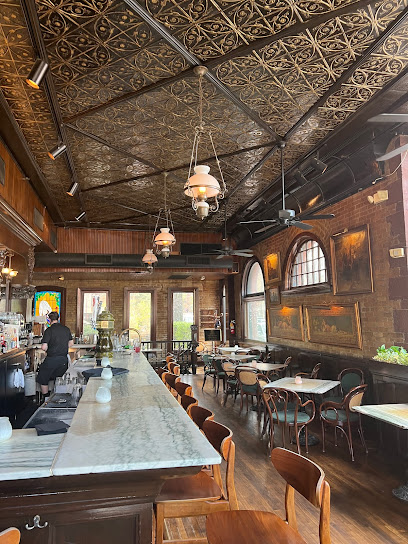
Downtowner Woodfire Grill
Experience fine dining at Downtowner Woodfire Grill in St. Paul - where every meal is crafted with passion and local ingredients.

Hope Breakfast Bar - St. Paul
Experience unique breakfast delights at Hope Breakfast Bar in St. Paul - where culinary creativity meets community spirit.
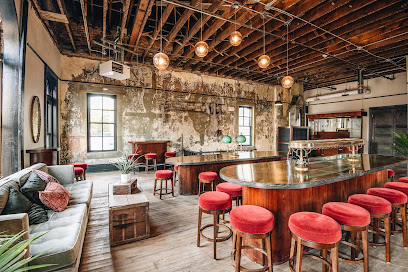
Dark Horse Bar & Eatery
Discover the heart of American cuisine at Dark Horse Bar & Eatery in downtown St. Paul - where great food meets vibrant nightlife.

The Lexington
Experience the elegance of The Lexington in St. Paul - where classic American cuisine meets modern flair in a historic setting.
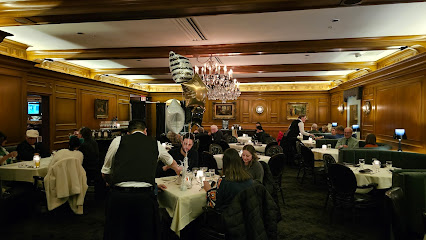
Yarusso Bros Italian Restaurant
Experience the heart of Italy at Yarusso Bros Italian Restaurant in St. Paul - where tradition meets flavor.
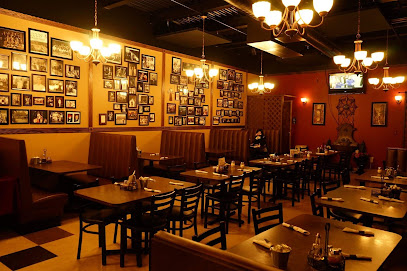
Red Rabbit St. Paul
Discover the vibrant flavors of Italy at Red Rabbit St. Paul - your go-to spot for brunch, dinner, and everything in between.
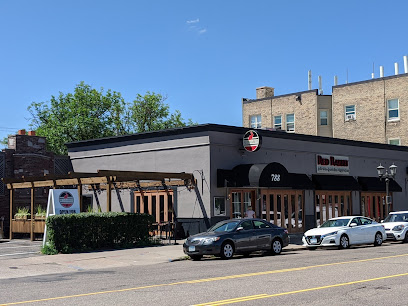
Markets, malls and hidden boutiques
Original Candyland store
Explore the delightful Original Candyland Store in St. Paul, where a rainbow of popcorn flavors and nostalgic sweets await every traveler.
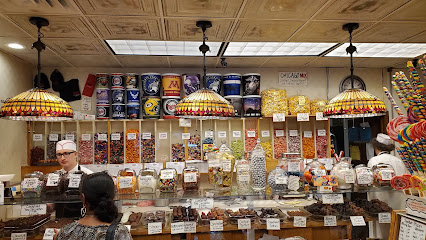
Caydence Records & Coffee
Discover a unique blend of coffee, music, and community spirit at Caydence Records & Coffee in St. Paul, Minnesota.
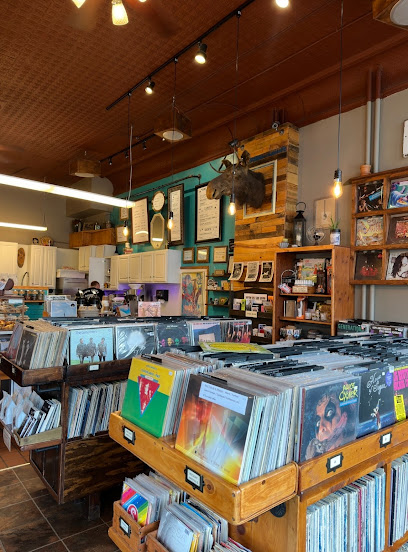
Mischief Toy Store
Explore the whimsical world of toys at Mischief Toy Store in St. Paul, where imagination drives play and every corner holds a new adventure.
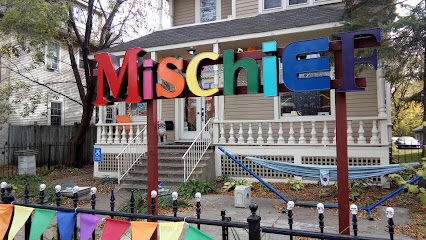
Heimie's Haberdashery
Explore Heimie's Haberdashery in St. Paul for exquisite men's and women's clothing, custom tailoring, and stylish leather goods, embracing Minnesota's fashion culture.
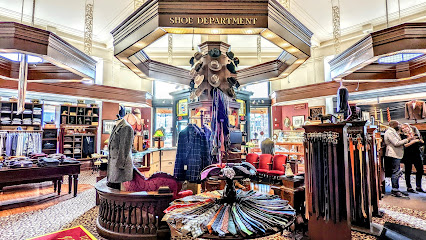
Mall of St Paul
Explore the Mall of St Paul, a charming antique and vintage clothing store filled with unique treasures and rich history in every corner.

Doddway Shopping Center
Explore the Doddway Shopping Center in St. Paul, MN: a vibrant shopping mall offering diverse shops, delicious food, and community events for all ages.
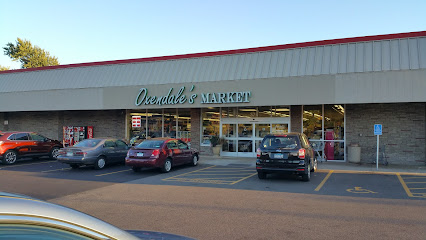
Irish On Grand
Explore the heart of Ireland at Irish On Grand, a charming gift shop in St. Paul offering authentic Irish goods, jewelry, and specialty foods.
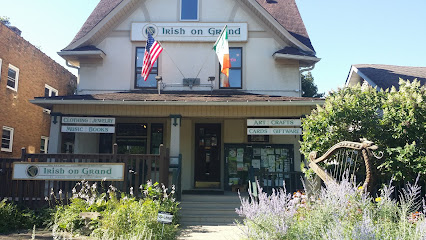
Subtext Books
Explore the enchanting world of literature at Subtext Books, a charming bookstore in downtown St. Paul, Minnesota, perfect for book lovers and curious travelers.
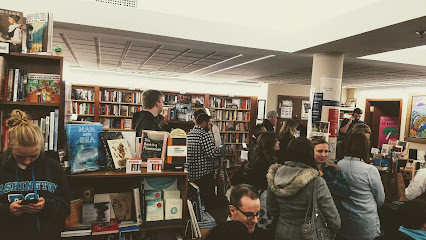
Fantasy Gifts
Dive into a treasure trove of unique gifts, adult novelties, and playful surprises at Fantasy Gifts in St. Paul, Minnesota.

Patina - Highland Park
Explore the charm of Patina - Highland Park, a gift shop filled with unique treasures and locally made products that capture the spirit of St. Paul.

Golden Fig Fine Foods
Experience the flavors of Minnesota at Golden Fig Fine Foods, your go-to gourmet grocery store for artisanal delights and local specialties.
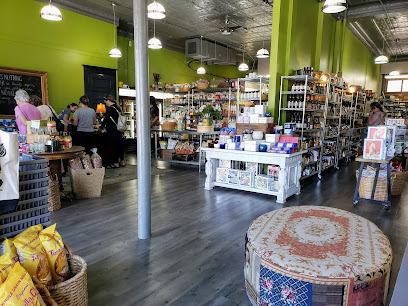
Patina - Selby & Snelling
Explore Patina - Selby & Snelling, where unique gifts and local artistry come together in a charming St. Paul gift shop.
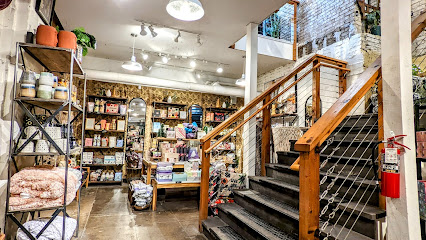
Downtown Smoke Shop
Discover the ultimate tobacco experience at Downtown Smoke Shop in St. Paul, offering a wide selection of cigars, hookahs, and vaporizers in a welcoming atmosphere.
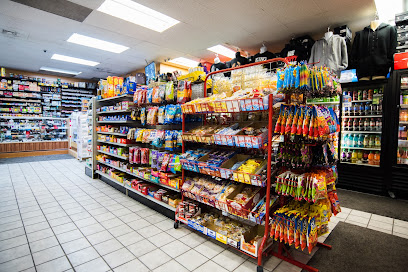
St Vincent de Paul Thrift Store
Explore the St Vincent de Paul Thrift Store in St Paul, MN, for unique finds and a chance to support local charitable initiatives in a charming environment.
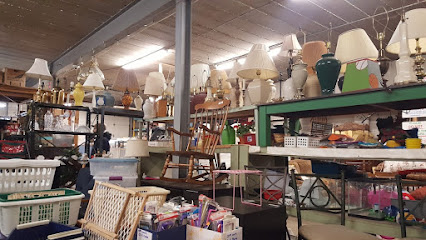
GoodThings
Explore GoodThings, a charming gift shop in St. Paul, MN, offering an eclectic mix of unique gifts, toys, and local artisan treasures.

Essential bars & hidden hideouts
The Gnome Craft Pub
Discover the charm of The Gnome Craft Pub, a cozy spot in Cathedral Hill for craft beer lovers and food enthusiasts in St. Paul.

Brunson's Pub
Discover Brunson's Pub in St. Paul, where gourmet comfort food meets a vibrant atmosphere and local craft brews.
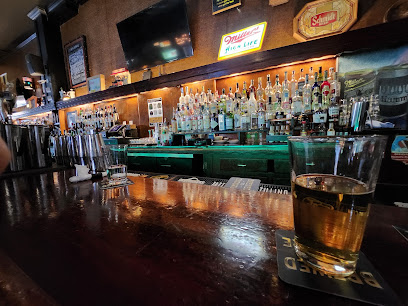
Dark Horse Bar & Eatery
Experience the best of American cuisine and vibrant nightlife at Dark Horse Bar & Eatery in Downtown St. Paul, a must-visit for all food lovers.
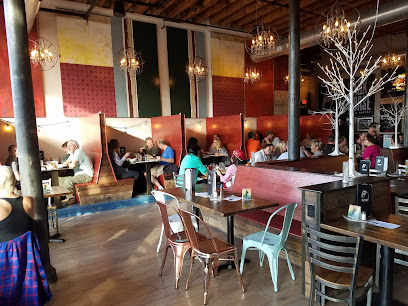
Tavern on Grand
Experience the best of American comfort food at Tavern on Grand, a popular restaurant and bar in the heart of St. Paul, Minnesota.
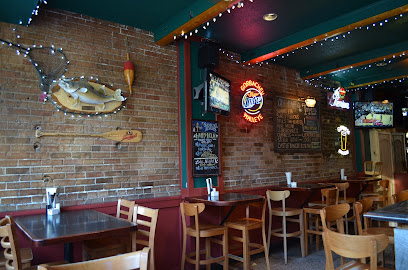
St Paul Tap
Experience delicious food, craft beers, and endless fun at St Paul Tap, the ultimate grill and bar in St. Paul, Minnesota.
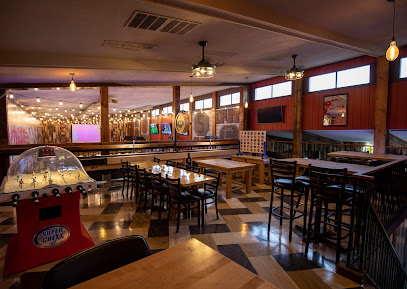
The Dubliner Pub
Discover the vibrant Irish culture at The Dubliner Pub in St. Paul, featuring live music, delicious pizza, and a lively sports bar atmosphere.
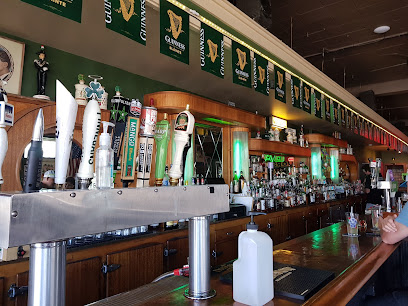
Sweeney's Saloon
Experience the lively atmosphere of Sweeney's Saloon in Cathedral Hill, St. Paul – a local favorite for drinks, bites, and vibrant nightlife.

Parlour St. Paul
Experience innovative American cuisine and craft cocktails at Parlour St. Paul, a vibrant restaurant and bar perfect for food lovers and casual diners.
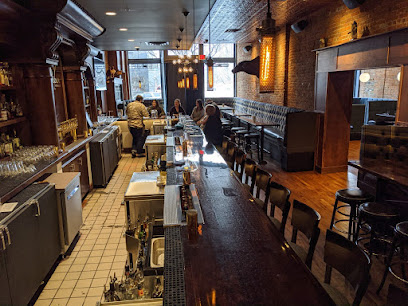
New Bohemia - St. Paul
Discover the vibrant atmosphere of New Bohemia in St. Paul, where German cuisine meets craft beer in a lively setting.
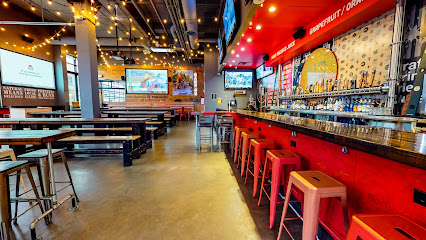
Half Time Rec
Discover Half Time Rec, a vibrant bar in St. Paul, offering an exceptional menu, friendly service, and a lively atmosphere perfect for unwinding.
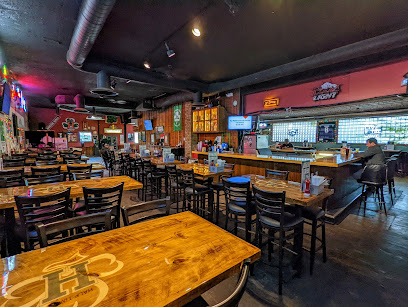
Gopher Bar
Discover the vibrant flavors of Gopher Bar in downtown St. Paul, where delicious grilled dishes meet a friendly atmosphere.
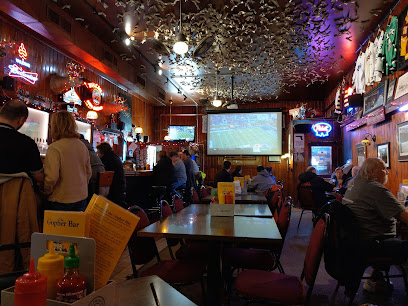
Tappers Pub
Discover Tappers Pub in St. Paul, Minnesota - a delightful bar offering craft beers, hearty pub fare, and a cozy atmosphere ideal for relaxation.
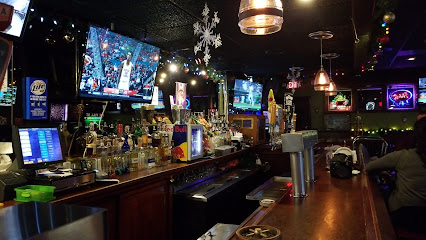
Black Hart of Saint Paul
Experience the vibrant atmosphere of Black Hart of Saint Paul, a welcoming bar that blends sports excitement with inclusivity.
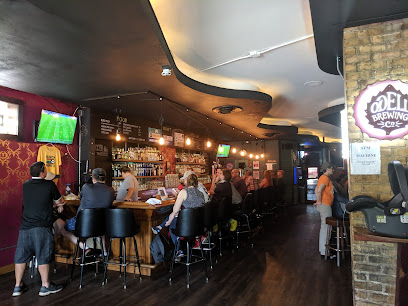
Camp Bar and Cabaret
Experience an unforgettable night at Camp Bar and Cabaret, where cocktails meet captivating performances in the heart of St. Paul.
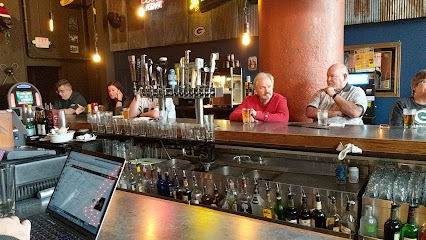
Grand 7
Discover Grand 7, a lively bar in St. Paul offering a fantastic atmosphere, great drinks, and live music for an unforgettable night out.
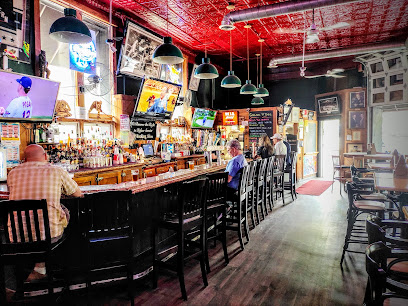
Local Phrases
-
- HelloHey there
[Hey thair] - GoodbyeSee ya
[See yah] - YesYeah
[Yea] - NoNah
[Nah] - Please/You're welcomePlease/No problem
[Pleez/No problm] - Thank youThanks a lot
[Thanks uh lot] - Excuse me/SorryPardon me/My bad
[Pardn mee/My bad] - How are you?How's it going?
[Hows it goin?] - Fine. And you?Doing good. You?
[Doing good. You?] - Do you speak English?You speak English?
[You speak Inglish?] - I don't understandI'm lost
[I'm lost]
- HelloHey there
-
- I'd like to see the menu, pleaseCan I check the menu?
[Can I chek the menu?] - I don't eat meatI'm vegetarian
[I'm vegetarian] - Cheers!Cheers!
[Cheers!] - I would like to pay, pleaseCheck, please
[Check, please]
- I'd like to see the menu, pleaseCan I check the menu?
-
- Help!Help!
[Help!] - Go away!Get lost!
[Get lost!] - Call the Police!Call the cops!
[Call the cops!] - Call a doctor!Get a doctor!
[Get a doctor!] - I'm lostI'm lost
[I'm lost] - I'm illI'm sick
[I'm sick]
- Help!Help!
-
- I'd like to buy...I wanna buy...
[I wanna buy...] - I'm just lookingJust browsing
[Just browsin] - How much is it?How much does it cost?
[How much duz it cost?] - That's too expensiveThat's too pricey
[That's too pricey] - Can you lower the price?Can you give me a discount?
[Can you give me a discount?]
- I'd like to buy...I wanna buy...
-
- What time is it?What's the time?
[Whats the time?] - It's one o'clockIt's one
[It's one] - Half past (10)Ten thirty
[Ten thirty] - MorningMorning
[Morning] - AfternoonAfternoon
[Afternoon] - EveningEvening
[Evening] - YesterdayYesterday
[Yesterday] - TodayToday
[Today] - TomorrowTomorrow
[Tomorrow] - 1One
[Wun] - 2Two
[Too] - 3Three
[Three] - 4Four
[Four] - 5Five
[Five] - 6Six
[Six] - 7Seven
[Seven] - 8Eight
[Ate] - 9Nine
[Nin] - 10Ten
[Ten]
- What time is it?What's the time?
-
- Where's a/the...?Where's the...?
[Wheres the...?] - What's the address?What's the address?
[Whats the address?] - Can you show me (on the map)?Can you show me (on the map)?
[Can you show me (on the map)?] - When's the next (bus)?When's the next (bus)?
[Whens the next (bus)?] - A ticket (to ....)A ticket (to ....)
[A ticket (to ....)]
- Where's a/the...?Where's the...?
History of Saint Paul
-
Saint Paul, originally called Pig's Eye, was founded in 1838 by Pierre Parrant, a French-Canadian fur trader. The settlement, which was named after Parrant's popular tavern 'Pig's Eye', quickly became a trading post and a destination for settlers. It was renamed Saint Paul in 1841 by Father Lucien Galtier, a Catholic priest, to honor the Apostle Paul and to provide a more respectable name for the growing community.
-
In 1849, Saint Paul was designated as the capital of the Minnesota Territory. The city's strategic location along the Mississippi River made it a crucial hub for trade and transportation. By the time Minnesota achieved statehood in 1858, Saint Paul had firmly established itself as the political and economic center of the region.
-
One of the most significant events in Saint Paul's early history was the Great Fire of 1857, which destroyed much of the city's downtown area. Despite the devastation, the city quickly rebuilt, and the fire spurred efforts to improve firefighting infrastructure and urban planning.
-
The late 19th century saw a boom in growth for Saint Paul with the arrival of the railroads. The city became a major transportation hub, connecting the Midwest to the rest of the country. Railroads like the Great Northern Railway, founded by James J. Hill, played a crucial role in the city's economic development.
-
During the late 19th and early 20th centuries, Saint Paul experienced a cultural renaissance. The city became known for its vibrant arts scene, with institutions like the Saint Paul Chamber Orchestra, the Ordway Center for the Performing Arts, and the Minnesota Opera contributing to its reputation as a cultural hub.
-
The 1920s and 1930s were marked by the presence of notorious gangsters in Saint Paul. The city became a haven for criminals like John Dillinger and Baby Face Nelson, thanks to a corrupt 'O'Connor System' that allowed gangsters to stay in the city as long as they committed no crimes within its limits. This era left a lasting mark on Saint Paul's history and is still a subject of fascination today.
-
Post-World War II Saint Paul saw significant urban renewal projects that reshaped the cityscape. The construction of the Interstate Highway System and the development of new residential and commercial areas transformed the city. Efforts to preserve historic districts and buildings have also been a focus, blending the old with the new.
-
Today, Saint Paul is known for its diverse population, rich history, and thriving cultural scene. The city boasts numerous museums, historic sites, and annual events like the Saint Paul Winter Carnival. As the capital of Minnesota, it continues to play a vital role in the state's political, economic, and cultural life.
Saint Paul Essentials
-
Saint Paul is served by Minneapolis-Saint Paul International Airport (MSP), which is located approximately 10 miles from downtown Saint Paul. The airport is well-connected with major cities across the United States and internationally. From the airport, you can reach Saint Paul by car, taxi, rideshare services like Uber and Lyft, or public transit via the Metro Transit Light Rail Blue Line and Green Line.
-
Saint Paul offers a variety of transportation options. Metro Transit provides extensive bus and light rail services that connect different parts of the city and the Twin Cities metro area. Taxis and rideshare services are widely available. Biking is also popular, with many dedicated bike lanes and trails. Car rentals are available but downtown parking can be expensive and limited.
-
The official currency in Saint Paul is the US Dollar (USD). Credit and debit cards are widely accepted in most establishments, including shops, restaurants, and hotels. ATMs are plentiful throughout the city. Mobile payment options like Apple Pay and Google Wallet are also commonly accepted.
-
Saint Paul is generally a safe city for tourists, but it's always important to exercise caution. Areas such as the Frogtown and Dayton's Bluff neighborhoods have higher crime rates and should be approached with caution, especially at night. Stick to well-lit and populated areas and keep an eye on your belongings in crowded places.
-
In case of emergency, dial 911 for police, fire, or medical assistance. Saint Paul has several hospitals, including Regions Hospital and United Hospital, which offer emergency services. Pharmacies are widely available for minor health issues. It is advisable to have travel insurance that covers medical emergencies.
-
Fashion: Do dress in layers, as weather can be unpredictable. Casual attire is generally acceptable, but avoid overly revealing clothing. Religion: Do respect local customs and places of worship. Remove hats and stay quiet in sacred spaces. Public Transport: Do be courteous and offer seats to elderly passengers. Don’t eat or drink on public transit. Greetings: Do greet people with a smile and a handshake. Minnesotans are known for their 'Minnesota Nice' politeness. Eating & Drinking: Do try local foods like Juicy Lucy burgers and walleye. Don’t forget to tip your servers, typically 15-20%.
-
To experience Saint Paul like a local, visit the Saint Paul Farmer’s Market for fresh produce and local goods. Explore the historic Summit Avenue, home to some of the city's most beautiful mansions. Check out the local breweries and coffee shops in Lowertown. Attend a Minnesota Wild game at the Xcel Energy Center for a quintessential local experience.
Trending Landmark in Saint Paul
Nearby Cities to Saint Paul
-
Things To Do in Minneapolis
-
Things To Do in Saint Cloud
-
Things To Do in Mankato
-
Things To Do in Eau Claire
-
Things To Do in Winona
-
Things To Do in La Crosse
-
Things To Do in Mason City
-
Things To Do in Duluth
-
Things To Do in Wausau
-
Things To Do in Waterloo
-
Things To Do in Fort Dodge
-
Things To Do in Brookings
-
Things To Do in Wisconsin Dells
-
Things To Do in Wahpeton
-
Things To Do in Watertown

















